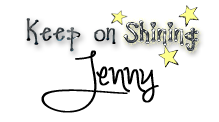Whether you're a teacher or parent you'll agree that your day is full of transitions. Parents and teachers alike have told me over the years how challenging transitions can be whether in the classroom or home.
This post is the first of a series of posts about strategies you can use regardless of your environment to help you and your children be more successful with transitions.
Did you know that the most difficult transition of the day is the transition from home to work or school? I would add that an equally challenging transition can be at the end of the day when you return home.
Today, we are going to begin the series by learning a skill called the M.A.P. technique. If you can add this basic tool from Dr. Becky Bailey's Conscious Discipline to your toolbox you will discover pretty quickly that your transitions are transformed!
The M.A.P. technique is an assertiveness tool that will help you think through the transitions that occur throughout your day. It will help you develop a road map for SUCCESS! If you were traveling from Indianapolis to Orlando you would plan out your trip and hopefully look at a map to help you get there successfully. Of course there are always a few bumps in the road, but the whole trip goes smoother if you plan ahead. The M.A.P. technique works the same way. It helps you plan ahead so everyone feels more successful in the end! :)
The first basic question to ask yourself is, "What do I want this time of day to look like, sound like, feel like?" The answer to that question will be your "destination". It will help you and your children figure out where you're going.
If you have older children you could even get them involved in the planning process. The answer to this basic question will guide you as you M.A.P. out the routine. This is how you will get to your destination!
What does M.A.P. Stand for?
M=Model your procedures and expectations
A=Add Visuals
P=Practice, practice, practice
I remember when I first began learning about Conscious Discipline and dinnertime in our home meant CHAOS! I returned from a Conscious Discipline training inspired to use these strategies to figure out a different way to do dinnertime.
I began by having a conversation with my husband to help us figure out what our "destination" as a family for dinnertime would be. His dinner experience was very different than mine as a child. He was an only child and his dad worked at night. He and his mom would usually eat dinner in front of the TV while watching recorded soaps form the day.
I came from a family of five. My mom and dad felt that dinnertime at the table together was very important. We had specific seats to sit in, we said prayer, asked to have the food passed while using good manners, and asked to be excused when we were finished.
As you can see, we came from very different experiences. Our destinations looked a little different. This conversation helped us figure out what we wanted the dinnertime experience in our home to look like, feel like, and sound like. It was so helpful to get on the same page.
Next, I worked with my children who were about 5 and 7 at the time to make a book about dinner in our home. First, I talked to them about the routine we would follow at dinner. I modeled what their dad and I wanted it to look like, feel like, and sound like. They agreed to be my models while I took pictures of them completing each part of our dinnertime routine. I turned the pictures into a very simple book that showed step by step what we would do at dinner. We practiced the routine by reading the book and acting it out.
The book was so helpful at the time. We used it frequently to help us remember how to make the transition from playtime to dinnertime without yelling and resistance. It was also helpful to follow-up with encouragement when people did what I wanted them to do. Learn more about that here .
One of the difficult transitions in my classroom happened after snack time every day. Meals present a different dilemma because children get done various rates.
We used the M.A.P. technique and came up with a routine to help ease the transition from snack to the next activity. We called the next activity "Book Buddies". Here are some of the pictures and steps we used to teach and practice this routine with the children so everyone would be successful!
I hope you find some inspiration here to help you think through your transitions and develop a plan that will help you and your children feel more successful! In our next post in this series will focus on some visuals you can use to help with transitions. I will also be sharing some free visuals that you could print out so you'll have a tool to use right away! Stay tuned!











No comments:
Post a Comment